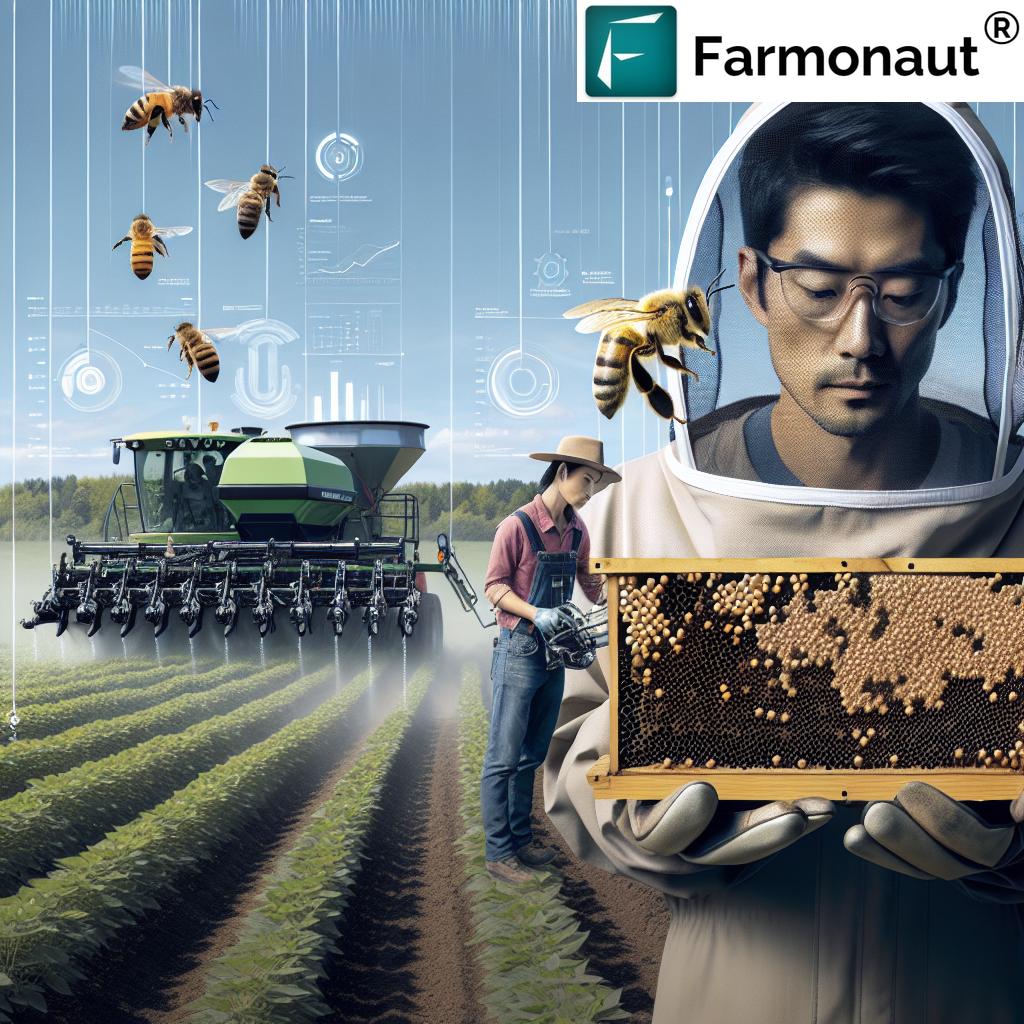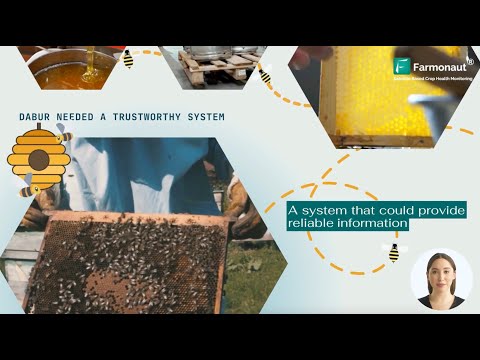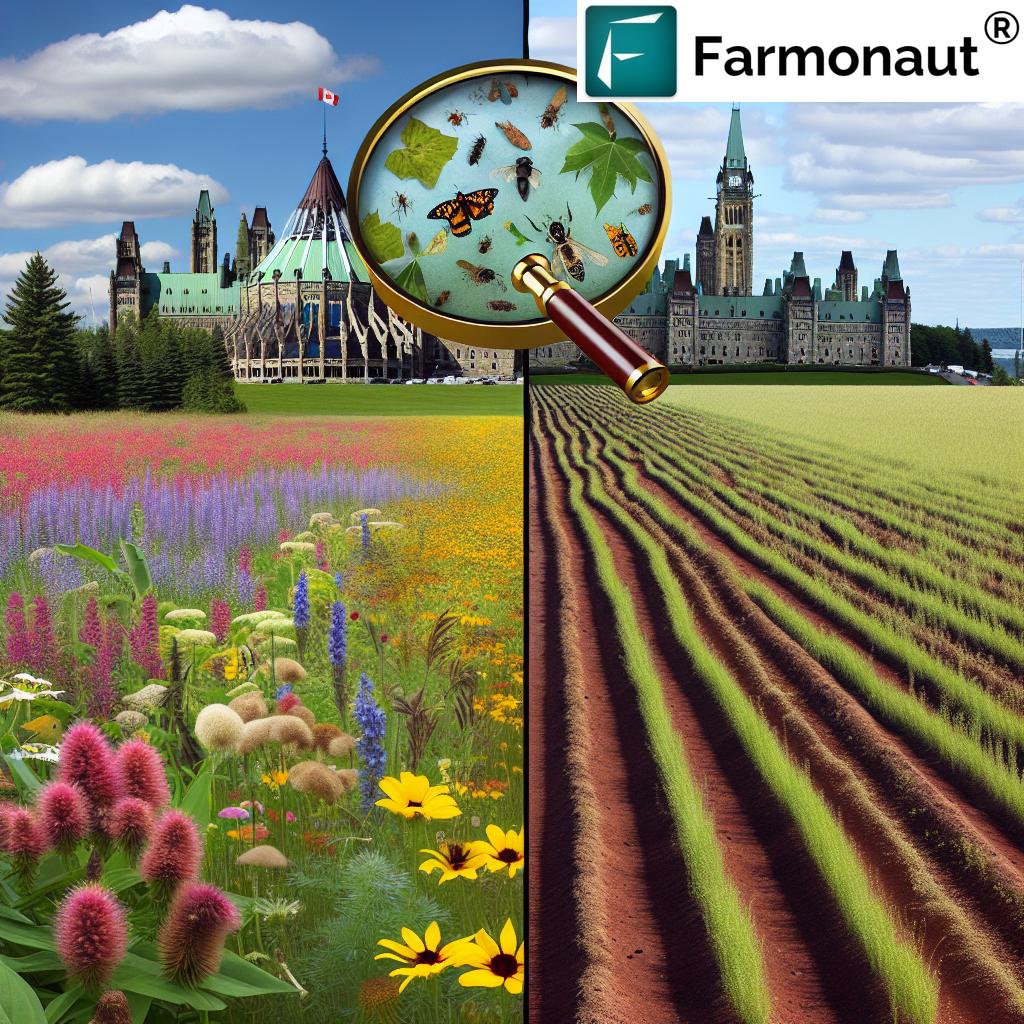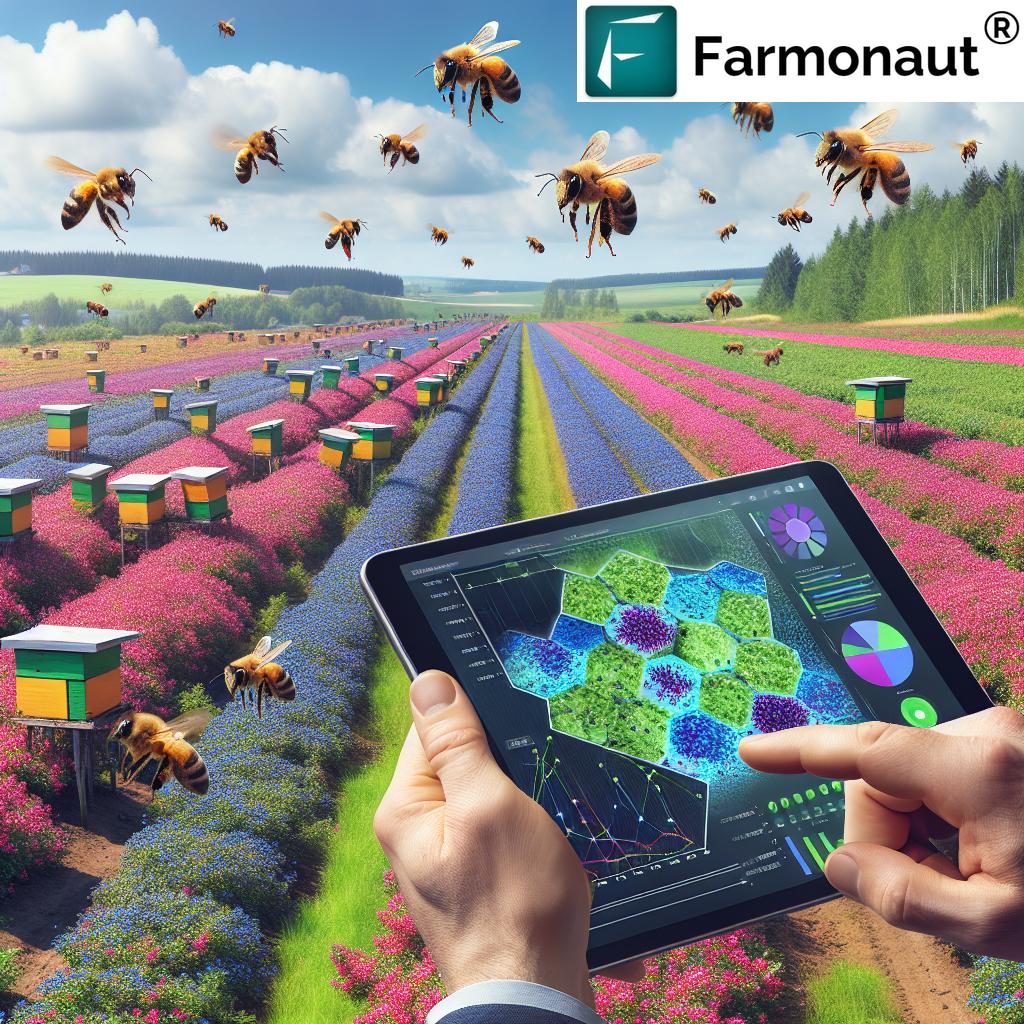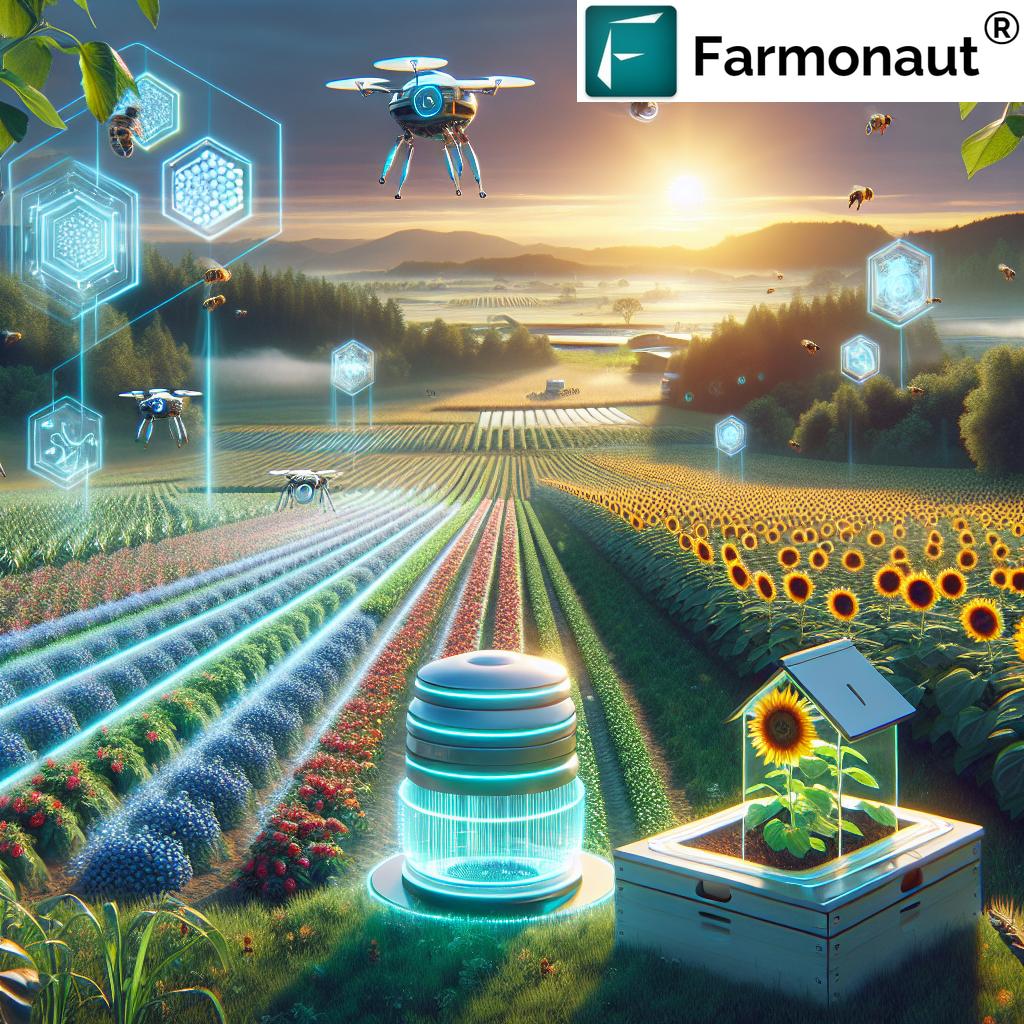Neonicotinoids in Ontario: Balancing Sustainable Agriculture and Pollinator Protection
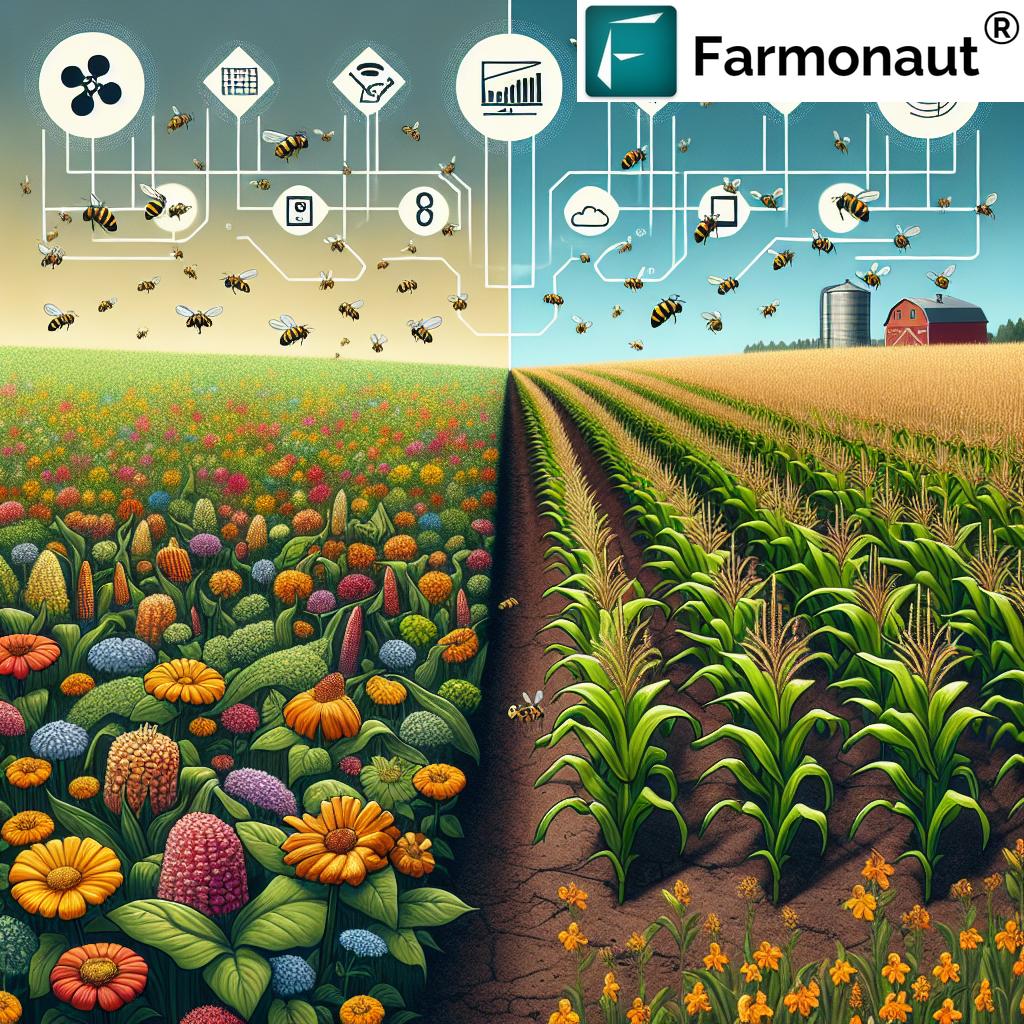
“Neonicotinoid use in Ontario and Quebec’s corn and soybean farming has led to a 35% decline in local bee populations.”
In the heart of Canada’s agricultural landscape, Ontario and Quebec have become the epicenter of a critical debate surrounding the use of neonicotinoid insecticides in corn and soybean farming. As we delve into this complex issue, we find ourselves at the crossroads of sustainable agriculture practices and the urgent need for pollinator protection measures. The impact of these widely-used pesticides on bee populations has sparked intense discussions among farmers, beekeepers, environmentalists, and policymakers alike.
In this comprehensive exploration, we will examine the multifaceted challenges facing Ontario’s agricultural sector as it grapples with balancing crop protection and environmental stewardship. We’ll investigate the roles of regulatory bodies such as the Pest Management Regulatory Agency (PMRA), analyze the concerns of beekeepers, and explore the perspectives of industry representatives. Our journey will take us through the intricacies of seed treatment regulations, the environmental impact of insecticides, and the innovative solutions being proposed to mitigate bee mortality in corn farming regions.
Understanding Neonicotinoids and Their Impact
Neonicotinoids, often referred to as “neonics,” are a class of systemic insecticides widely used in agriculture, particularly in seed treatments for crops like corn and soybeans. These chemicals have gained popularity due to their effectiveness in pest control and their systemic nature, which allows them to be absorbed by plants and distributed throughout their tissues.
However, the widespread use of neonicotinoids has raised significant concerns about their impact on non-target organisms, especially pollinators like bees. In Ontario, where corn and soybean farming are major agricultural activities, the use of neonicotinoid-treated seeds has been particularly prevalent.
The Neonicotinoid Impact on Bees
- Sublethal effects on bee behavior and cognition
- Reduced foraging efficiency and navigation abilities
- Weakened immune systems, making bees more susceptible to diseases and parasites
- Potential long-term impacts on bee colony health and survival
Research has shown that even low levels of neonicotinoid exposure can have detrimental effects on bees. These impacts range from immediate mortality to more subtle, long-term consequences that can affect entire colonies.
The Ontario Context: Agriculture and Pollinators
Ontario’s agricultural landscape is diverse, with corn and soybeans being among the most important crops. The province’s farmers have relied heavily on neonicotinoid-treated seeds to protect their crops from pests, particularly in the crucial early stages of plant growth.
Key Statistics:
- Over 2 million acres of corn planted annually in Ontario
- Approximately 3 million acres of soybeans grown each year
- Neonicotinoid use estimated on 80-100% of corn acreage before regulations
At the same time, Ontario is home to a significant beekeeping industry, with honey production and pollination services playing crucial roles in the agricultural economy. The province’s beekeepers have reported alarming rates of bee deaths, particularly during the spring planting season when neonicotinoid-treated seeds are sown.
Regulatory Response and Protective Measures
In response to growing concerns about the impact of neonicotinoids on pollinators, both federal and provincial governments in Canada have taken steps to regulate their use.
Federal Action: PMRA’s Role
The Pest Management Regulatory Agency (PMRA), Canada’s federal pesticide regulator, has been at the forefront of assessing the risks associated with neonicotinoid use. Key actions include:
- Conducting comprehensive reviews of neonicotinoid pesticides
- Implementing new risk mitigation measures for treated corn and soybean seeds
- Enhancing warning labels on neonicotinoid products
- Promoting safer planting practices to reduce dust exposure during seeding
Ontario’s Provincial Measures
Ontario has taken a proactive stance in addressing the neonicotinoid issue, implementing some of the strictest regulations in North America:
- Introducing a goal to reduce neonicotinoid-treated corn and soybean seed use by 80%
- Requiring farmers to complete pest risk assessments before using treated seeds
- Implementing a licensing system for vendors selling neonicotinoid-treated seeds
- Promoting integrated pest management (IPM) strategies as alternatives
“Implementing safer planting practices reduced bee mortality by 80% in Ontario’s corn farming regions.”
The Effectiveness of Interventions
The implementation of these regulatory measures and protective practices has shown promising results in reducing bee mortality associated with neonicotinoid use. However, the effectiveness of these interventions remains a topic of ongoing research and debate.
Positive Outcomes:
- Significant reduction in acute bee deaths during planting season
- Increased adoption of best management practices by farmers
- Greater awareness of the importance of pollinator health in agricultural communities
Ongoing Challenges:
- Long-term effects of neonicotinoid residues in the environment
- Balancing pest management needs with pollinator protection
- Ensuring economic viability for farmers while implementing new practices
Farmonaut’s Satellite API offers innovative solutions for monitoring crop health and pest pressures, potentially reducing the need for preventive pesticide use.
Alternative Pest Management Strategies
As the agricultural sector grapples with the challenges posed by neonicotinoid restrictions, there is a growing focus on alternative pest management strategies that can protect crops while minimizing harm to pollinators.
Integrated Pest Management (IPM)
IPM is a holistic approach to pest control that emphasizes prevention, monitoring, and the use of multiple tactics to manage pest populations. Key components of IPM include:
- Regular scouting and monitoring of pest populations
- Use of economic thresholds to determine when intervention is necessary
- Implementation of cultural practices to reduce pest pressure
- Targeted use of pesticides only when other methods are insufficient
Biological Control
Biological control involves using natural predators, parasites, or pathogens to manage pest populations. This approach can be particularly effective in reducing reliance on chemical pesticides:
- Introduction of beneficial insects that prey on crop pests
- Use of microbial agents to target specific pest species
- Promotion of habitat diversity to support natural enemy populations
Crop Rotation and Diversification
Implementing diverse crop rotations can help break pest life cycles and reduce the buildup of pest populations:
- Alternating corn and soybeans with other crops
- Incorporating cover crops to improve soil health and disrupt pest habitats
- Exploring intercropping or companion planting strategies
Farmonaut’s API Developer Docs provide insights into how satellite data can be leveraged for precision agriculture and pest management.
The Role of Technology in Sustainable Agriculture
As we seek solutions to the complex challenges of balancing crop protection with pollinator health, technology plays an increasingly crucial role. Precision agriculture tools and data-driven farming practices offer new ways to optimize pest management while minimizing environmental impact.
Satellite-Based Crop Monitoring
Advanced satellite imaging technology, such as that offered by Farmonaut, provides farmers with real-time data on crop health and potential pest pressures. This information allows for more targeted and efficient pest management strategies:
- Early detection of pest infestations through vegetation indices
- Identification of stress patterns that may indicate pest activity
- Precise application of treatments only where needed, reducing overall pesticide use
AI-Powered Decision Support Systems
Artificial intelligence and machine learning algorithms are revolutionizing farm management by providing data-driven insights and recommendations:
- Predictive models for pest outbreaks based on historical and real-time data
- Customized treatment recommendations based on specific field conditions
- Integration of weather forecasts to optimize timing of pest control measures
Precision Application Technologies
Advancements in farm equipment and application technologies allow for more precise and efficient use of crop protection products:
- Variable rate technology for targeted pesticide application
- Drift reduction nozzles to minimize off-target movement of pesticides
- GPS-guided equipment for accurate placement of treatments
The Broader Context: Climate Change and Pollinator Health
While the focus on neonicotinoids is critical, it’s important to recognize that pollinator health is influenced by a complex web of factors, with climate change playing an increasingly significant role.
Climate Change Impacts on Pollinators
- Shifts in flowering times and pollinator life cycles
- Changes in habitat range and availability
- Increased frequency of extreme weather events
- Alterations in pest and disease dynamics
These climate-related challenges underscore the need for holistic approaches to pollinator protection that go beyond pesticide regulation alone.
Adapting Agriculture to Climate Change
As we work to protect pollinators and maintain agricultural productivity, adapting to climate change becomes crucial:
- Developing climate-resilient crop varieties
- Implementing water conservation practices
- Enhancing soil health to improve crop resilience
- Creating pollinator-friendly habitats within agricultural landscapes
The Future of Sustainable Agriculture in Ontario
As we look to the future of agriculture in Ontario, it’s clear that a multifaceted approach will be necessary to address the challenges of pest management, pollinator protection, and climate adaptation. This approach will likely include:
- Continued research into safer pest control alternatives
- Expanded adoption of precision agriculture technologies
- Greater integration of ecological principles into farming practices
- Enhanced collaboration between farmers, researchers, and policymakers
By embracing these strategies and leveraging innovative technologies like those offered by Farmonaut, Ontario’s agricultural sector can work towards a more sustainable and pollinator-friendly future.
Comparative Analysis of Neonicotinoid Use and Pollinator Protection Measures
| Agricultural Practice | Neonicotinoid Usage (Estimated %) | Potential Impact on Pollinators | Protective Measures Implemented | Effectiveness of Measures | Alternative Pest Management Strategies |
|---|---|---|---|---|---|
| Conventional Corn Farming | 80-100% (pre-regulation) | High | Seed treatment restrictions, improved planting practices | Medium | IPM, crop rotation, biological control |
| Soybean Cultivation | 60-80% (pre-regulation) | Medium | Mandatory pest assessments, reduced usage targets | Medium-High | Non-treated seeds, cultural practices |
| Organic Farming | 0% | Low | Natural pest control methods | High | Companion planting, beneficial insects |
| Precision Agriculture | Variable (targeted use) | Low-Medium | Satellite monitoring, AI-driven applications | High | Data-driven pest management, variable rate technology |
Conclusion: A Balanced Approach for the Future
The journey towards balancing sustainable agriculture and pollinator protection in Ontario is ongoing and complex. While significant progress has been made in reducing the impact of neonicotinoids on bee populations, challenges remain. The agricultural sector must continue to evolve, embracing new technologies and practices that allow for effective pest management while minimizing harm to pollinators and the broader environment.
As we move forward, the integration of precision agriculture technologies, such as those offered by Farmonaut, will play a crucial role in achieving this balance. By providing farmers with detailed, real-time data on crop health and pest pressures, these tools enable more targeted and efficient use of crop protection products, reducing overall pesticide use while maintaining agricultural productivity.
The future of farming in Ontario will likely see a greater emphasis on integrated pest management strategies, increased adoption of alternative pest control methods, and a continued focus on research and innovation. By working together, farmers, researchers, policymakers, and technology providers can create a more resilient and sustainable agricultural system that protects both crops and pollinators.
Ultimately, the goal is to ensure food security while preserving the health of our ecosystems. This requires a commitment to ongoing learning, adaptation, and collaboration across all sectors of the agricultural community. As we face the challenges of climate change and evolving pest pressures, the lessons learned from the neonicotinoid debate in Ontario will be invaluable in shaping the future of sustainable agriculture not just in Canada, but around the world.
FAQs
- What are neonicotinoids, and why are they controversial?
Neonicotinoids are a class of systemic insecticides widely used in agriculture. They’re controversial due to their potential negative impacts on pollinator populations, particularly bees. - How have neonicotinoid regulations affected Ontario farmers?
Ontario farmers have had to adapt to new regulations, including mandatory pest assessments and reduced usage targets for neonicotinoid-treated seeds. This has led to changes in pest management practices and increased adoption of alternative strategies. - What are some alternatives to neonicotinoid use in agriculture?
Alternatives include integrated pest management (IPM), biological control methods, crop rotation, and the use of precision agriculture technologies for targeted pest management. - How can technology help in reducing pesticide use while maintaining crop yields?
Technologies like satellite-based crop monitoring and AI-powered decision support systems can help farmers identify pest pressures more accurately and apply treatments more precisely, potentially reducing overall pesticide use. - What role do beekeepers play in the neonicotinoid debate?
Beekeepers have been instrumental in raising awareness about the impacts of neonicotinoids on bee populations and advocating for stricter regulations and alternative pest management strategies.
